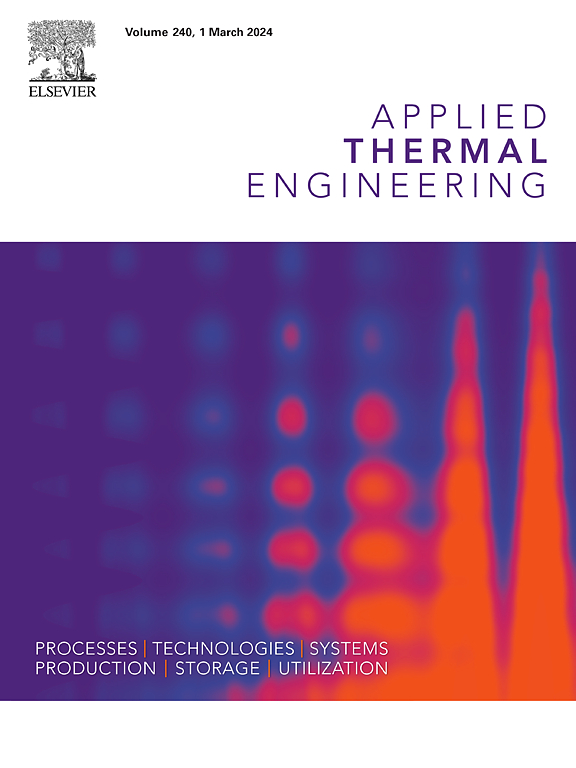Wetting dynamics and heat transfer of droplet evaporation around boiling point: Facile manipulation by surface roughness
IF 6.1
2区 工程技术
Q2 ENERGY & FUELS
引用次数: 0
Abstract
The evaporation of water–ethanol droplets on solid surfaces has vast potential for applications in thermal management, microfluidics, and biomedical sciences, while the approach of manipulating wetting dynamics and heat transfer of droplet evaporation around the boiling point remains open for investigations. The present study proposes a facile approach: fabricating solid surfaces with diverse roughness by sandpaper milling with different grit densities, which can alter the wetting and heat transfer characteristics of droplet evaporation. We discover that when the temperature of the heated surface exceeds the droplet boiling point, the existence of bubbles affects the solid–liquid wetting state; surface roughness alters the ability of bubble departure, thus determining the solid–liquid contact and the contact line retraction time. Consequently, in this case, the solid–liquid contact area and the heat absorbed from heated surfaces for droplets changes with surface roughness, altering the droplet evaporation time and the average heat flux at the solid–liquid interface. Bridged by droplet wetting dynamics, the heat transfer of droplet evaporation above the boiling point can be manipulated by adjusting surface roughness, offering a facile approach to tuning the process of droplet evaporation in the related industrial applications.
沸点附近液滴蒸发的润湿动力学和传热:通过表面粗糙度轻松操控
水-乙醇液滴在固体表面上的蒸发在热管理、微流控和生物医学等领域具有巨大的应用潜力,而如何操纵沸点附近液滴蒸发的润湿动力学和传热仍有待研究。本研究提出了一种简便的方法:通过不同砂粒密度的砂纸铣削制造出不同粗糙度的固体表面,从而改变液滴蒸发的润湿和传热特性。我们发现,当加热表面的温度超过液滴沸点时,气泡的存在会影响固液润湿状态;表面粗糙度会改变气泡离开的能力,从而决定固液接触和接触线回缩时间。因此,在这种情况下,固液接触面积和液滴从加热表面吸收的热量会随着表面粗糙度的变化而变化,从而改变液滴蒸发时间和固液界面的平均热通量。以液滴润湿动力学为桥梁,可以通过调节表面粗糙度来操纵沸点以上的液滴蒸发传热,为调整相关工业应用中的液滴蒸发过程提供了一种简便的方法。
本文章由计算机程序翻译,如有差异,请以英文原文为准。
求助全文
约1分钟内获得全文
求助全文
来源期刊

Applied Thermal Engineering
工程技术-工程:机械
CiteScore
11.30
自引率
15.60%
发文量
1474
审稿时长
57 days
期刊介绍:
Applied Thermal Engineering disseminates novel research related to the design, development and demonstration of components, devices, equipment, technologies and systems involving thermal processes for the production, storage, utilization and conservation of energy, with a focus on engineering application.
The journal publishes high-quality and high-impact Original Research Articles, Review Articles, Short Communications and Letters to the Editor on cutting-edge innovations in research, and recent advances or issues of interest to the thermal engineering community.
 求助内容:
求助内容: 应助结果提醒方式:
应助结果提醒方式:


